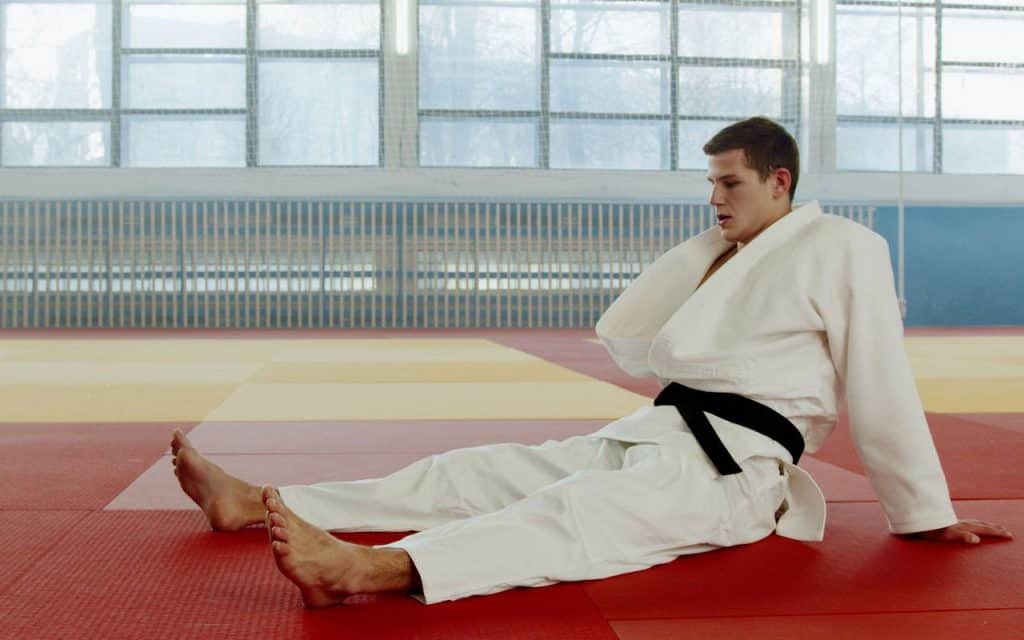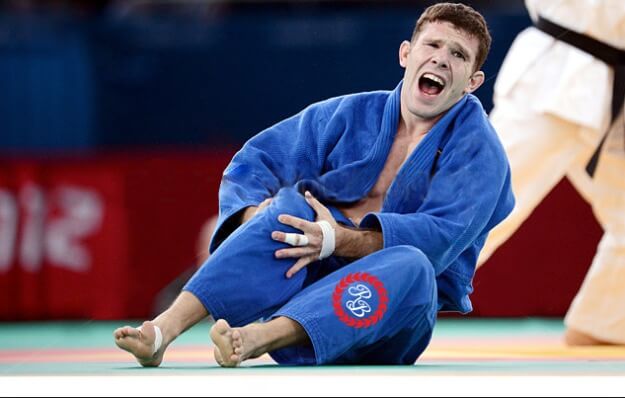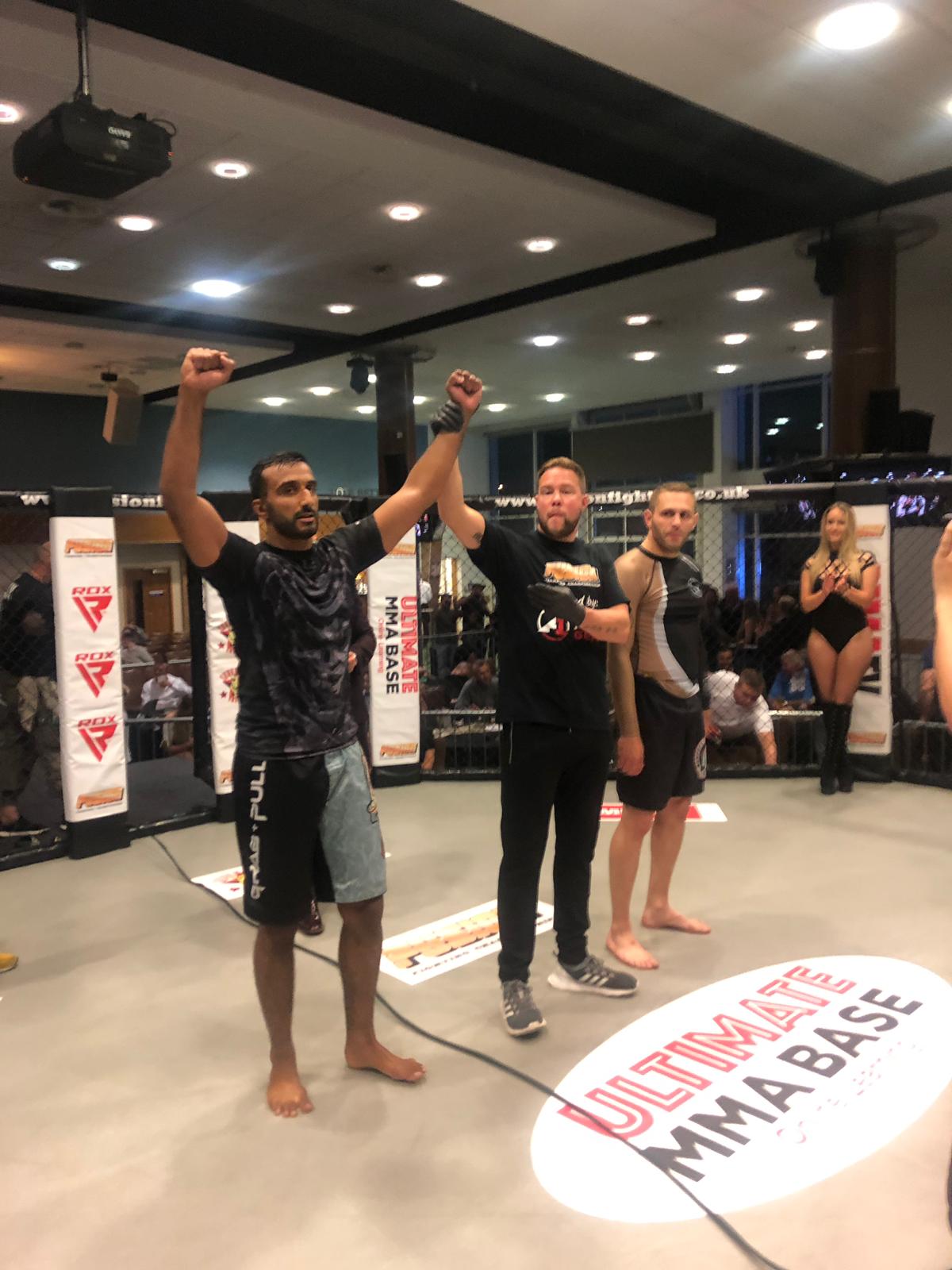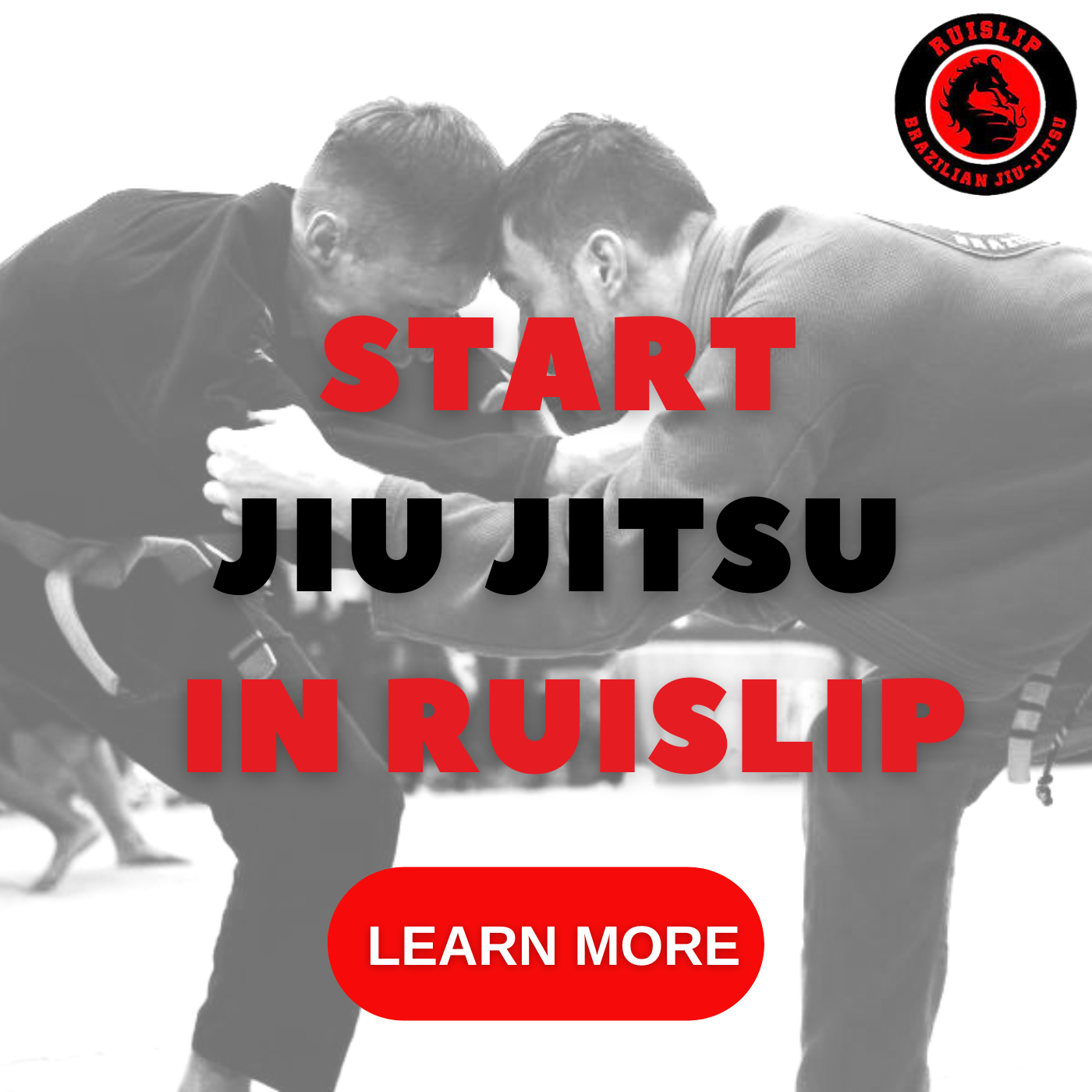MARTIAL ARTS CLASSES IN HILLINGDON
Martial arts refer to various forms of combat or self-defence systems that originated in different parts of the world. These systems involve physical training, discipline, and techniques. If you’re looking to find a martial arts class in Hillingdon and learn more, read on
Martial Arts Classes In Hillingdon
There are plenty of martial arts classes in Hillingdon for you to benefit from. The various classes are across different locations and disciplines.
See below for a list of martial arts classes that you can start across West London & Hillingdon
Ruislip BJJ
Ruislip BJJ is a Brazilian Jiu-Jitsu class based between Ruislip & Northolt, its easy to access from most areas in West London.
The club offers a free trial and caters to beginners. The club is run by black belts Raj Dosanjh & Wiktor Herka. Classes are on the below days & times:
Mon (Kids): 16:30 – 17:45
Mon (Striking): 19:30 – 21:15
Tue (No – Gi): 19:30 – 21:15
Wed (Ladies self defence): 20:00-21:30
Thu (Gi): 19:30 – 21:15
Fri (Open Mat): 12:00 – 13:15
Sun (Mixed): 09:30 – 11:30
Simply turn up or call/email: 07932 502332 / Info@ruislipbjj.com
MJN Hayes
The karate club has successfully been run by Sensei Alan For over 25 years and this is the club where it all started for Sempai Scott. This is a split child and adult class on Friday nights. Sensei Alan handed the club over to Sempai Scott during 2021 to run along side the other MJN clubs.
Tiska
Develop balance, coordination, self-confidence and discipline with beginners free trial. All ages and families welcome.
The Uxbridge, Hillindon and New Denham Karate club offer classes on Wednesday evenings, as well as Saturday and Sunday mornings.
Beginner classes have been especially designed with the beginner in mind. The clubs have a wide variety of members from beginners to black belt. Families and children are very drawn to the art of karate and the clubs have members as young as five.
Pinner Aikido
The Pinner Club has been running since 1995. They have changed venues a few times, but still retain the name “Pinner” club as they have been known by that name for such a long time.
At Pinner Aikido Club London, they try to make the dojo environment relaxed and fun. This helps to foster a happy and friendly club – making it easy to join in and learn.
Freestyle School Of Martial Arts
Their programmes have a strong focus on personal development. The foundations of our morals, values and core character traits are formed in our early years. For this reason, the programmes at Freestyle School of Martial Arts are an essential way to enhance the growth and personal development of young students of all ages.
Hillingdon Shaolin Kung Fu
Students will learn to use various hand and leg techniques, how to use footwork and blocking to evade attacks. To understand the importance of distance, students will also learn how to use short and long range self-defence techniques such as joint locks and throws. Forms are also taught to develop stamina and focus through a sequence of pre-arranged techniques, which also help co-ordination and movement. Their forms incorporate multi angle as well as multi level application which helps foster a better understanding of flow and centre.
MATT FIDDES MARTIAL ARTS
Their martial arts programmes are not only great fun for kids and adults, they also offer loads of other health benefits from fitness to building confidence to helping children with their development.
The Family classes at the Matt Fiddes Martial Arts schools are extremely popular and offer something for people of all abilities who want to improve their lives. Classes are designed to offer students the best martial arts education – whether you’re looking to lose weight or learn
Benefits of Martial Arts
There are numerous benefits associated with practising martial arts, some of which are discussed below.
Improved physical fitness: One of the most obvious benefits of martial arts is the improvement in physical fitness. Training in martial arts involves a wide range of physical activities, such as stretching, kicking, punching, and sparring, which help to improve strength, endurance, flexibility, and coordination.
Enhanced self-defence skills: Another benefit of martial arts is the development of self-defence skills. By learning various techniques, such as blocking, striking, and grappling, practitioners can become better equipped to protect themselves in dangerous situations.
Increased confidence: Practising martial arts can also help to build confidence. As individuals progress in their training, they become more adept at handling themselves in physical confrontations and are less likely to feel intimidated or threatened in potentially dangerous situations.
Improved mental focus and discipline: Martial arts training requires a high level of mental focus and discipline. Practitioners must concentrate on their techniques and maintain control of their emotions during training and sparring sessions. This focus and discipline can spill over into other areas of life, such as school or work, helping practitioners to be more productive and efficient.
Stress relief: Martial arts training can also serve as a form of stress relief. The physical activity and mental focus required in training can help practitioners to clear their minds and release pent-up tension and anxiety.
Improved social skills: Many martial arts schools have a strong sense of community, with practitioners of all ages and backgrounds coming together to train and support each other. This can help practitioners to develop social skills and make new friends
What to expect in a martial arts class in Hillingdon
The experience of a martial arts class can vary depending on the specific style, instructor, and location. However, here are a few things that you might typically expect in a martial arts class:
Warm-up: Most martial arts classes in Hillingdon begin with a warm-up, which can include stretching, calisthenics, or other exercises to prepare the body for physical activity.
Techniques: The bulk of a martial arts class will typically be devoted to learning and practicing specific techniques, such as strikes, kicks, throws, or submissions. These techniques may be taught through drills, sparring, or other methods.
Sparring: Some martial arts classes may include sparring, which is a form of simulated combat that allows practitioners to apply the techniques they have learned in a controlled and safe environment. Sparring may be done with protective gear and with rules in place to ensure the safety of all participants.
Conditioning: Many martial arts classes include conditioning exercises to improve physical fitness and endurance. These may include push-ups, sit-ups, or other exercises to build strength and stamina.
Cool-down: Most martial arts classes end with a cool-down period, which can include stretching or other exercises to help the body recover from the physical exertion of the class.
Overall, you can expect a martial arts class to be physically demanding and challenging, but also rewarding and fun. It is important to listen to the instructor and follow their instructions, and to always prioritize safety and respect for others.
The Most Popular Martial Arts

There are many different martial arts styles that are popular around the world, and the most popular styles can vary depending on the region and cultural influences. Most types of martial arts are available in Hillingdon. Some of the most popular martial arts styles include:
Karate: Karate is a Japanese martial art that involves strikes using the fists, elbows, knees, and shins. It also includes throws, joint locks, and pressure point attacks.
Taekwondo: Taekwondo is a Korean martial art that emphasises high, fast kicks and jumps. It is known for its flashy, acrobatic kicks and impressive sparring drills.
Kung Fu: Kung Fu is a Chinese martial art that includes a wide range of techniques, such as strikes, kicks, throws, joint locks, and pressure point attacks. It also includes various forms, or pre-arranged sets of techniques, that are practised solo or in pairs.
Judo: Judo is a Japanese martial art that involves throws, joint locks, and chokes. It emphasises using the momentum and balance of an opponent to take them down and control them.
Boxing: Boxing is a Western martial art that involves striking an opponent using punches thrown with the fists. It is a popular sport that is practised in gyms and arenas around the world.
Brazilian Jiu-Jitsu: Brazilian Jiu-Jitsu (BJJ) is a Brazilian martial art that focuses on ground fighting and submission holds. It emphasises techniques that allow a smaller, weaker practitioner to defend themselves against a larger, stronger opponent.
Muay Thai: Muay Thai is a Thai martial art that involves strikes using the fists, elbows, knees, and shins. It is known for its devastating kicks and knees, and is often referred to as “the art of eight limbs.”
These are just a few examples of the many martial arts styles that are popular around the world. There are many other styles to choose from, each with its own unique techniques and philosophies.
Is Martial Arts Right For Me?

Martial arts can be a great activity for individuals of all ages and fitness levels. It offers numerous physical and mental benefits, such as improved strength, endurance, flexibility, coordination, focus, and discipline. However, it is important to keep in mind that martial arts can be physically demanding and may not be suitable for everyone. There are different martial ares clubs in Hillingdon so hopefully you can find the right one for you.
Here are a few things to consider when deciding if martial arts is right for you:
Physical limitations: If you have any physical limitations or injuries, it is important to consult with a healthcare professional before starting martial arts training. Some martial arts styles may be more physically demanding than others, so it is important to choose a style that is appropriate for your fitness level and physical abilities.
Personal goals: Think about what you hope to achieve through martial arts training. Do you want to improve your physical fitness, learn self-defence skills, relieve stress, or something else? Different martial arts styles may be better suited to different goals, so consider what is most important to you.
Time and commitment: Martial arts training typically involves regular classes and may also require additional training outside of class. Consider whether you have the time and commitment to devote to regular martial arts training.
Interest and enjoyment: Finally, consider whether you are genuinely interested in martial arts and think you would enjoy the training. While the physical and mental benefits of martial arts are important, it is also important to choose an activity that you enjoy and look forward to participating in.
Ultimately, the decision of whether martial arts is right for you will depend on your personal circumstances and goals. It may be helpful to try out a few different styles or speak with practitioners of different martial arts to get a sense of what might be the best fit for you.
Am I Too Old For Martial Arts?

There is no age limit for starting martial arts training, and it can be a great activity for individuals of all ages. In fact, many martial arts schools have programs specifically designed for older adults, especially in Hillingdon. At Ruislip BJJ, we have students over 55 years of age training 3 times a week!
Martial arts can offer numerous physical and mental benefits to older adults, such as improved balance, flexibility, coordination, and strength. It can also help to reduce stress and improve mental focus and discipline.
If you are interested in starting martial arts training but are concerned about your age, there are a few things you can do to make the transition smoother:
Consult with a healthcare professional: It is always a good idea to consult with a healthcare professional before starting any new physical activity, especially if you have any underlying health conditions or injuries. They can advise you on whether martial arts training is appropriate for you and what precautions you should take.
Choose a martial art that is appropriate for your fitness level: There are many different martial arts styles to choose from, and some may be more physically demanding than others. Consider your current fitness level and choose a style that is appropriate for you.
Take it slow: Don’t try to do too much too soon. Start with shorter training sessions and gradually increase the duration and intensity as you become more comfortable and fit.
Find a supportive instructor: Look for an instructor who is supportive and understanding of your age and fitness level. They should be able to modify techniques and training drills to suit your needs.
Remember, it is never too late to start martial arts training and reap the numerous physical and mental benefits it has to offer.
How Do I Get Started?
Starting martial arts training in Hillingdon can be a fun and rewarding experience.
If you art based near Ruislip, check out Ruislip BJJ. We have classes throughout the week and are perfect for beginners.
Here are a few steps to help you get started:
Choose a martial art: There are many different martial arts styles to choose from, each with its own unique techniques, philosophies, and training methods. Consider your personal goals, physical abilities, and interests when choosing a martial art. It may also be helpful to speak with practitioners of different martial arts or try out a few classes to see which style you enjoy the most.
Find a school or instructor: Once you have chosen a martial art, the next step is to find a school or instructor to train with. Look for a school or instructor that has a good reputation and is experienced in the martial art you have chosen. Consider factors such as the location, schedule, and cost of the classes.
Gather the necessary equipment: Depending on the martial art you have chosen, you may need to purchase some basic equipment, such as a uniform (also called a “gi” in some styles) or protective gear. Your instructor or school should be able to advise you on what equipment you need and where you can purchase it.
Attend your first class: Arriving at your first class can be intimidating, especially if you are new to martial arts. Remember that everyone has to start somewhere, and your instructor and fellow students will be there to support you. Wear comfortable clothing that allows for a full range of movement, and arrive a few minutes early to introduce yourself to the instructor and get settled.
Practice regularly: Martial arts training typically involves regular classes and may also require additional training outside of class. Make a commitment to practice regularly and attend as many classes as you can. As you progress in your training, you will see improvement in your physical fitness, technique, and overall skills.
Starting martial arts training can be a fun and rewarding experience that offers numerous physical and mental benefits. With the right approach and attitude, you can make the most of your training and enjoy the journey of learning a new martial art.
Will I Get Injured Doing Martial Arts?

Like any physical activity, martial arts training carries a risk of injury. However, the risk of injury can be minimised through proper training, supervision, and the use of protective gear.
Here are a few tips to help reduce the risk of injury while training in martial arts:
Warm up properly: It is important to warm up before any physical activity, including martial arts training. A proper warm-up helps to increase blood flow, loosen up the muscles, and reduce the risk of injury.
Learn proper technique: Proper technique is essential for reducing the risk of injury in martial arts. Make sure to pay attention to your instructor and practice techniques slowly and carefully until you have mastered them.
Use protective gear: Depending on the martial art you are training in, you may need to use protective gear such as gloves, headgear, or shin guards. Make sure to use the appropriate gear and follow the instructions for fitting and using it properly.
Train at the right intensity: It is important to train at an intensity that is appropriate for your fitness level and experience. Don’t push yourself too hard too soon and take breaks as needed.
Listen to your body: Pay attention to your body and how it is feeling during training. If you experience pain or discomfort, stop the activity and inform your instructor.
By following these tips and training under the supervision of a qualified instructor, you can minimise the risk of injury while enjoying the many benefits of martial arts training.
Hillingdon Martial Arts
In conclusion, there are tonnes of martial arts clubs in Hillingdon. Each clubs has their own techniques, standards and disciplines.
It’s not always best to pick the nearest martial art. Sometimes a club further away can provide more benefits. Ruislip BJJ is accessible across Hillingdon and has a range of beginners and more experienced students.
LOOKING TO START BJJ in Ruislip?
Send us a message and we’ll get back to you, or call us directly on 07932502332


